AuthKit Roles and Permissions
AuthKit now has permissions — completing the RBAC feature set.
This is everything you need to know to start implementing authorization in your applications.
Video tutorial
Chapters:
- Set up the example app (Next.js)
- Permissions exist on sessions
- Create new permissions in WorkOS
- Add permissions to roles
- Understand session duration
- Create and assign permissions to roles
- Implement permission checks in your app
- Where to learn more…
Setup
For this lesson, we’re using the latest next-authkit-example app.
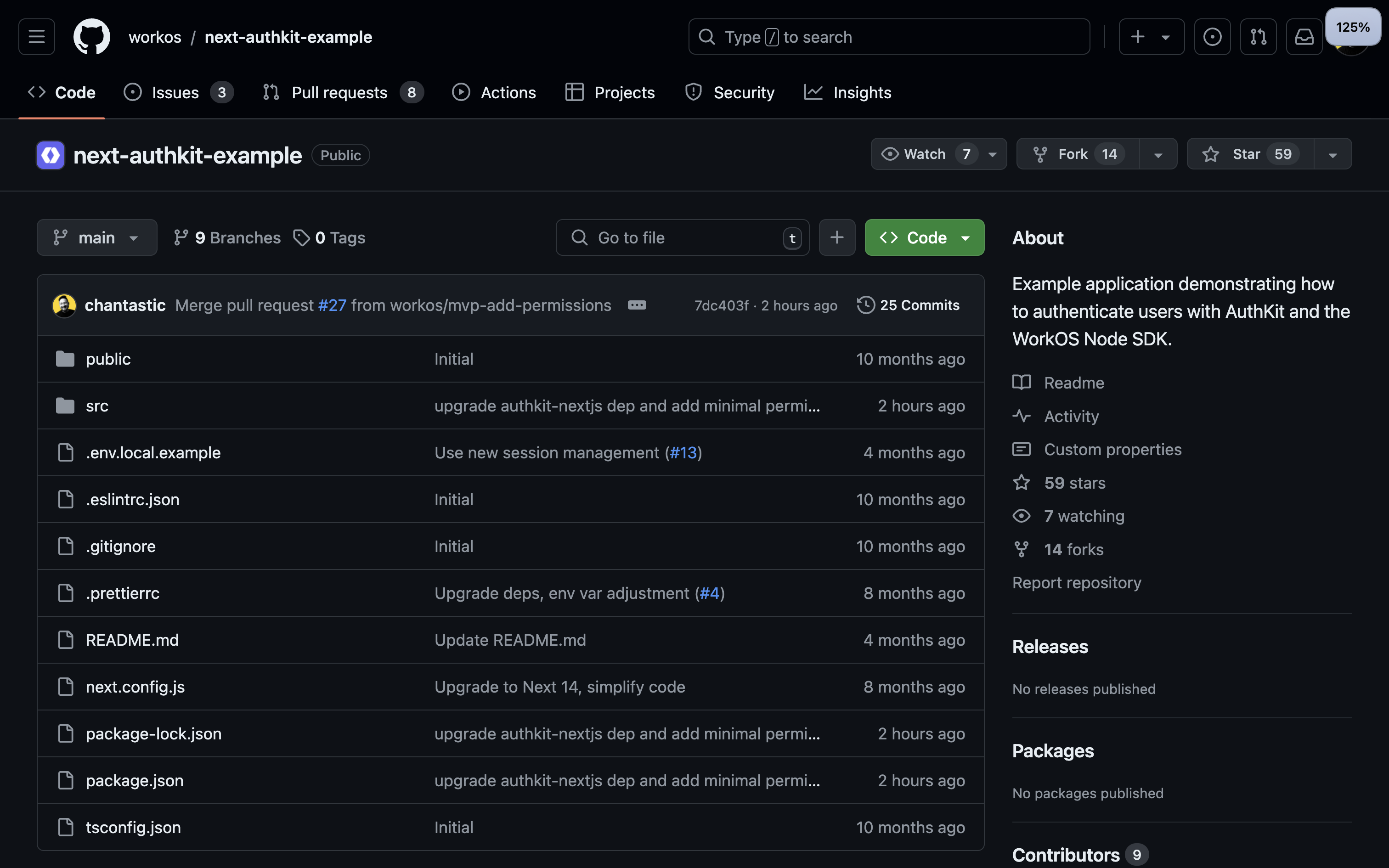
Sessions include permissions
Permissions are available on AuthKit session object.
Opening the next-authkit-example, we see that permissions is an array of strings.
And that the property is parallel to the user and role properties.

Running the app, we can sign in to see a few session details but no permissions.
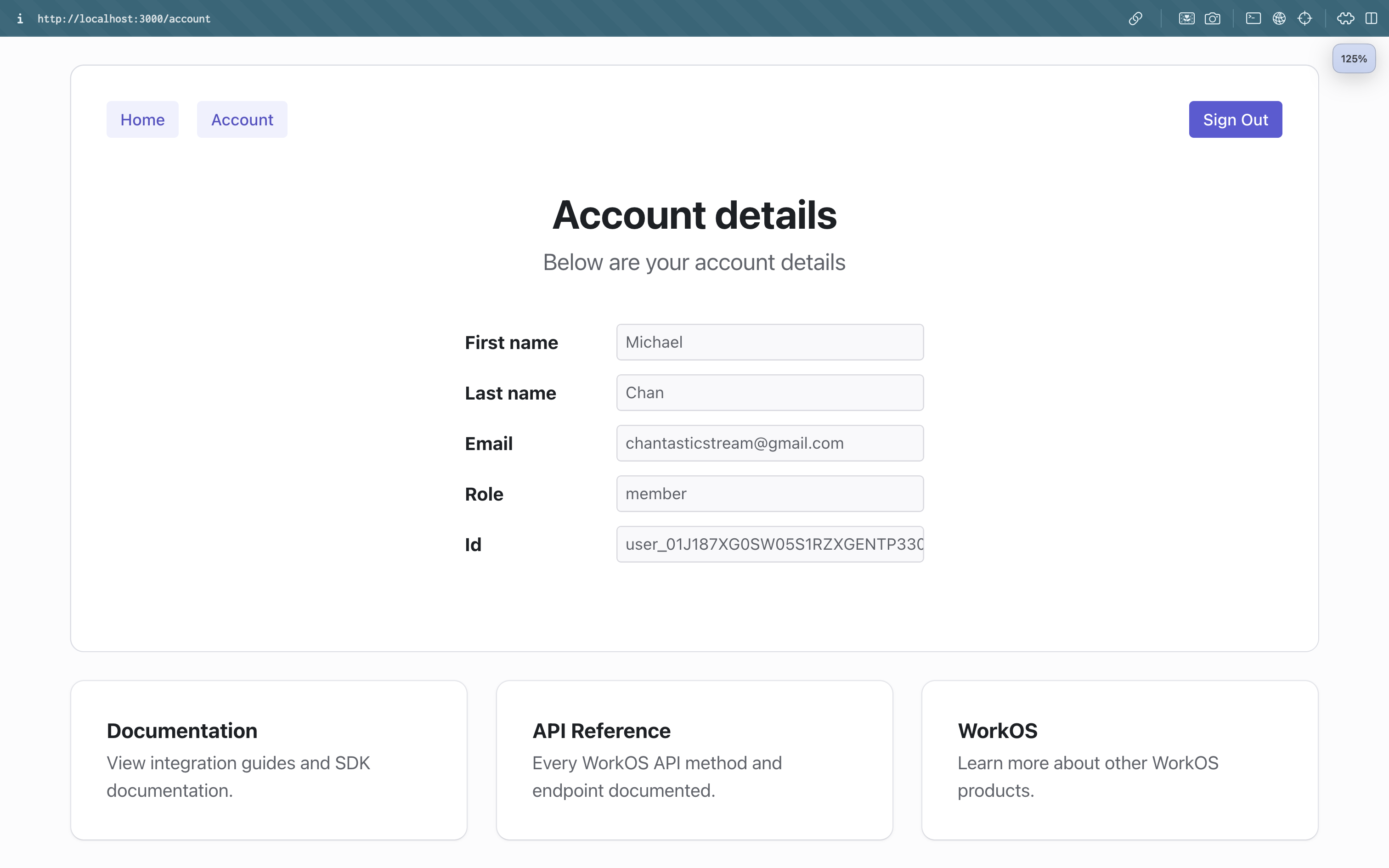
This property is empty, when no permissions are assigned. So, let’s add couple permissions in the WorkOS Dashboard.
Add permissions is the WorkOS Dashboard
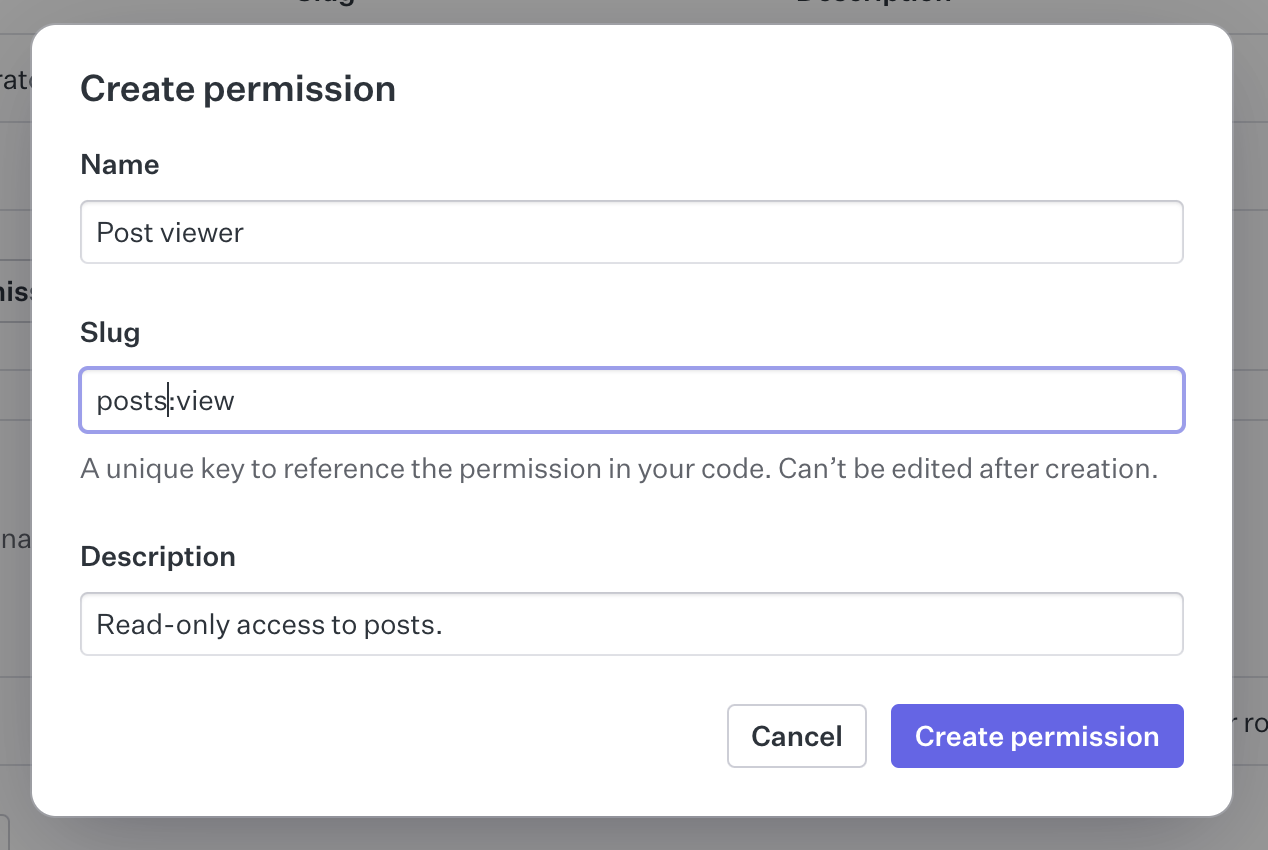
Navigate to the Roles tab (in the WorkOS Dashboard).
Create a new permission with:
Name: A colloquial name.Slug: The value that will be stored on the session and used for authorization.Description: An optional field for additional permission details and instructions.
I’ll add two permissions:
posts:readposts:all
The firt for read-only and the second for full CRUD.
Note that the slugs can’t be changed after creation.

Assign permissions to roles
Permissions cannot be directly assigned to users.
They’re applied to users thru roles.
By default, every user in AuthKit gets a Member role.
Let’s update the Member role to include compose the posts:read permission.
Back in our app, let’s sign out and back in again to see the updated permissions.
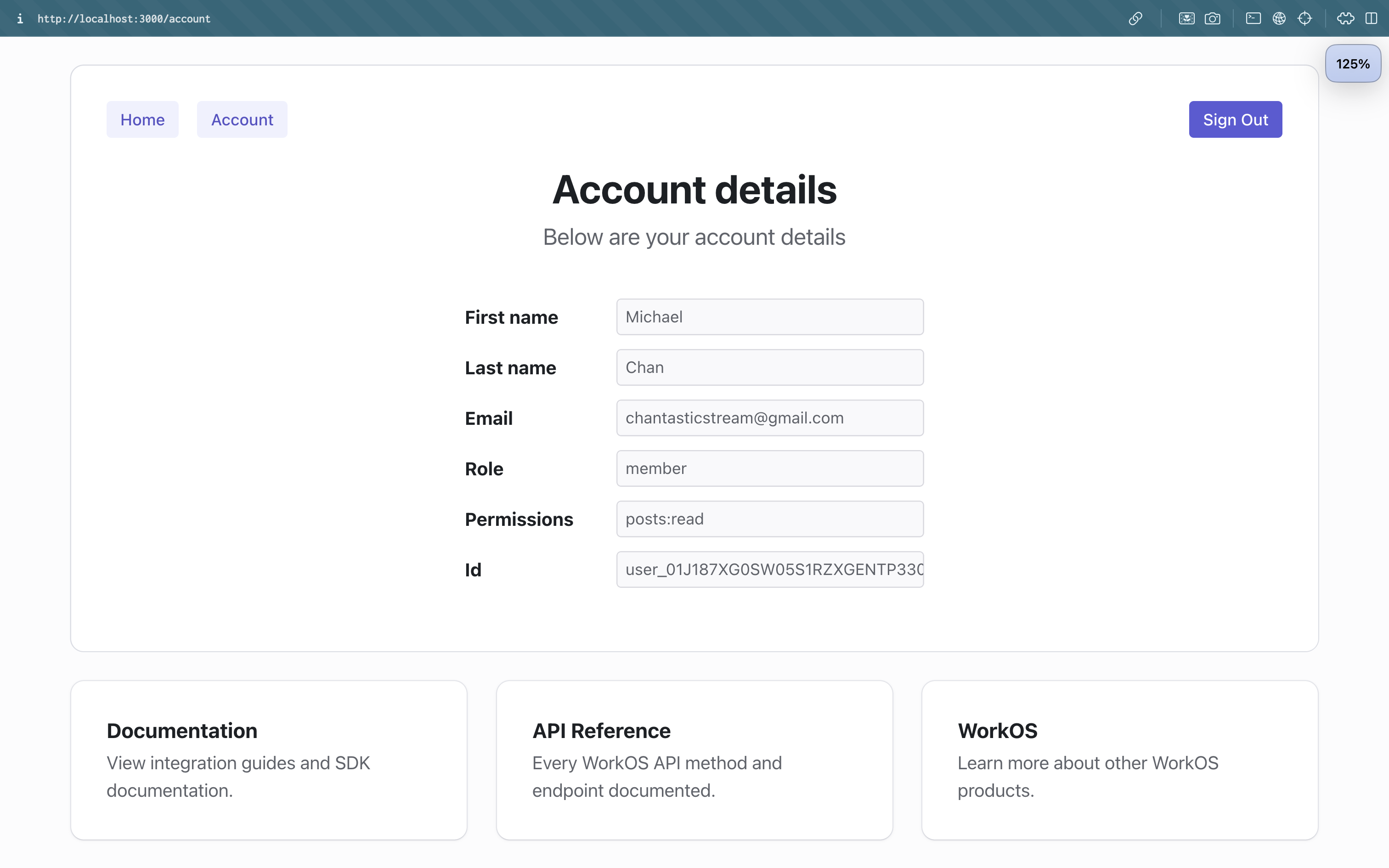
Note: We’re logging out to force a fresh session. The access token duration setting dictates the rate at which a session is refreshed. This is set in Authentication > Sessions).
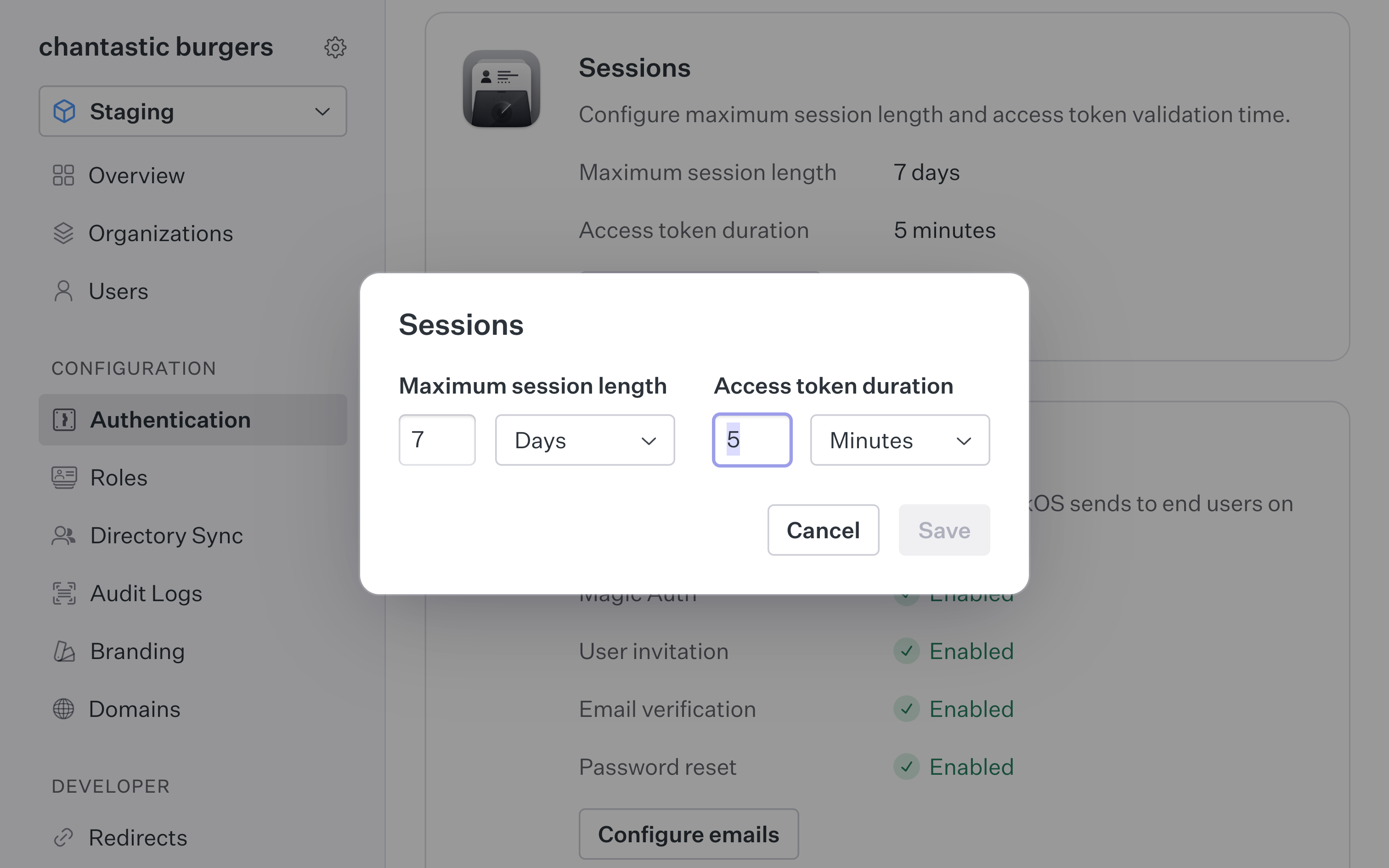
Assign a new role to a user
Back in our WorkOS dashboard, let’s create an Admin role, and assign the posts:all permission to it.
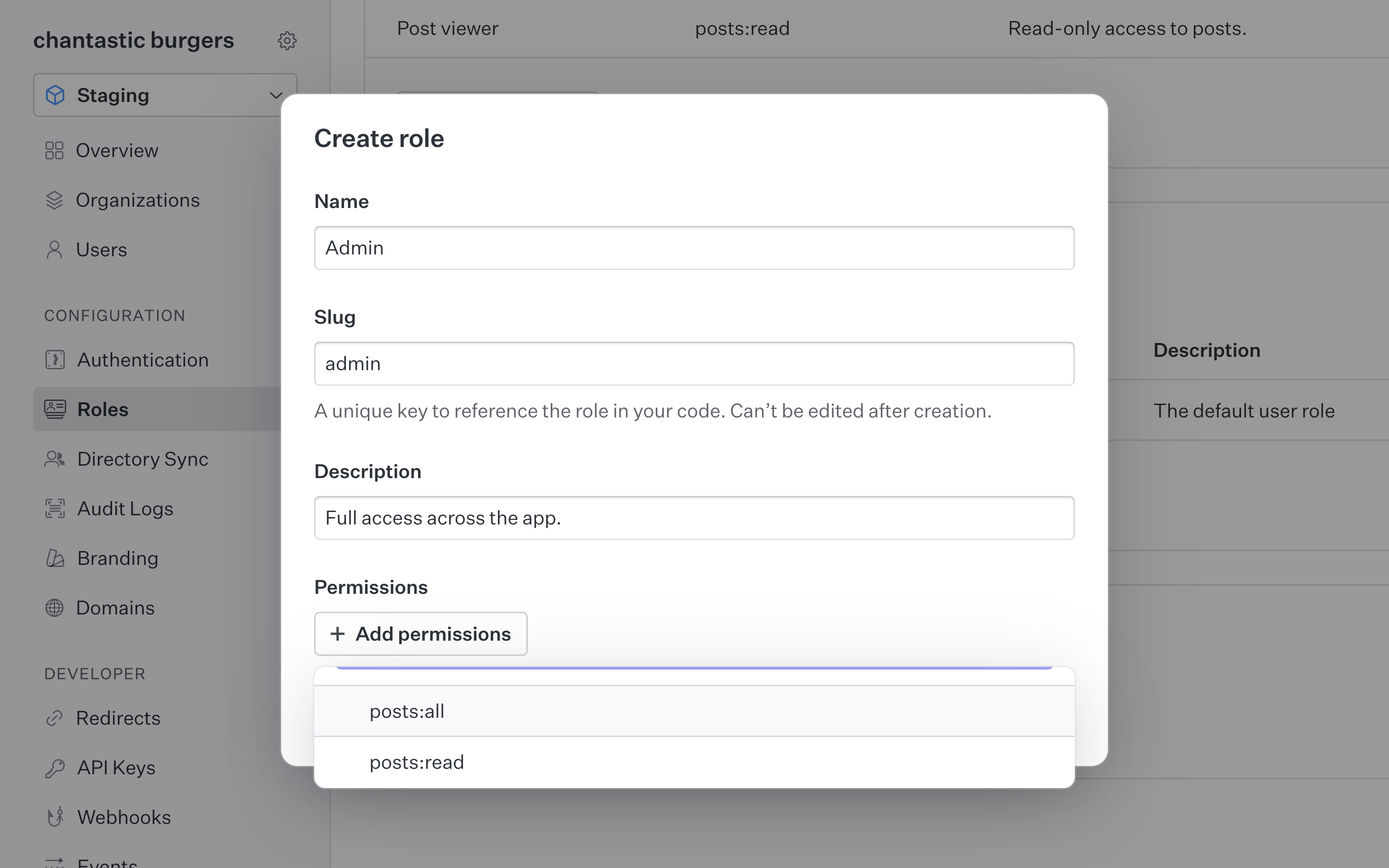
Then change our user’s role from Member to Admin.
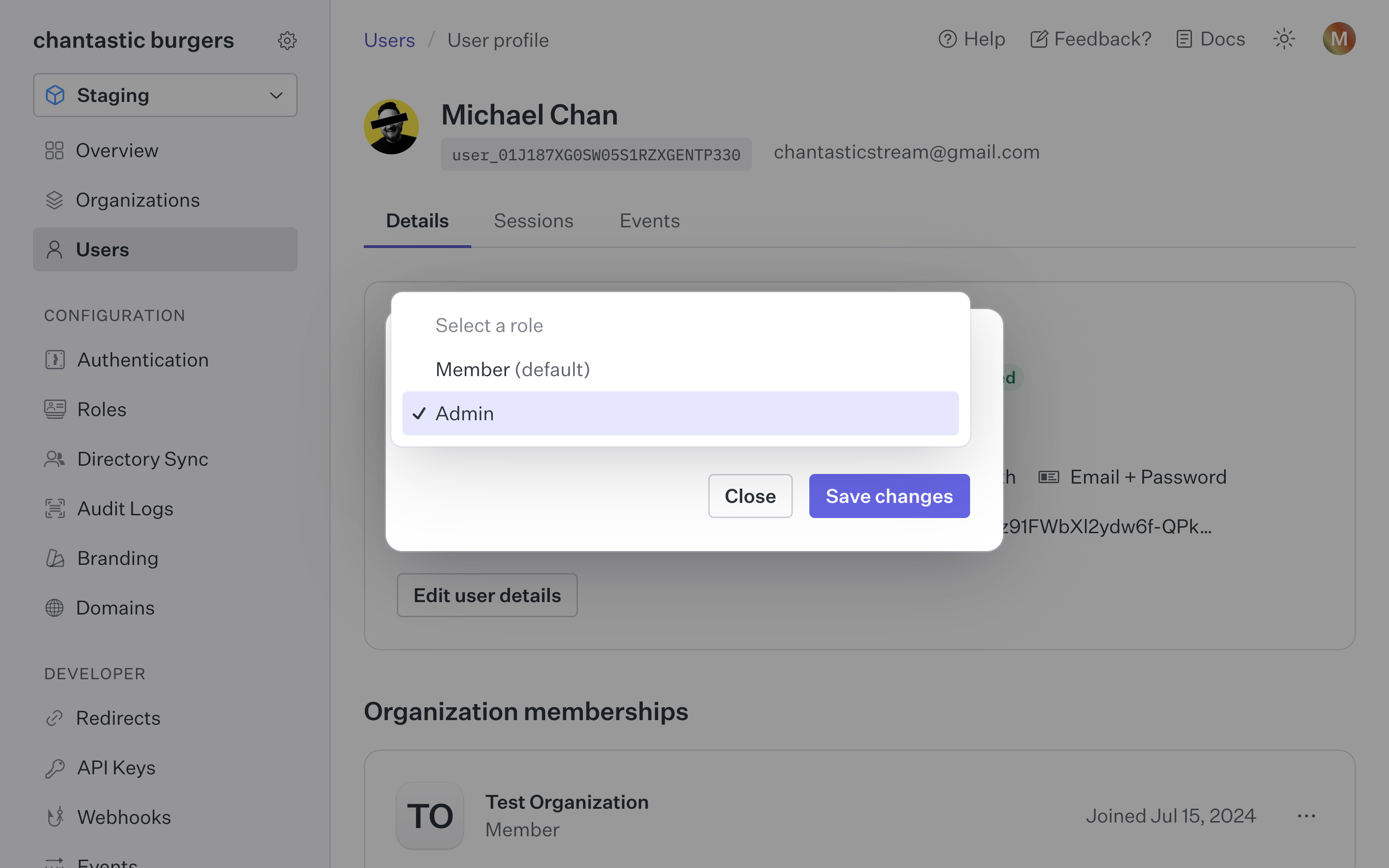
Log out and back in again to force a session refresh.
And see both the new role and permissions!
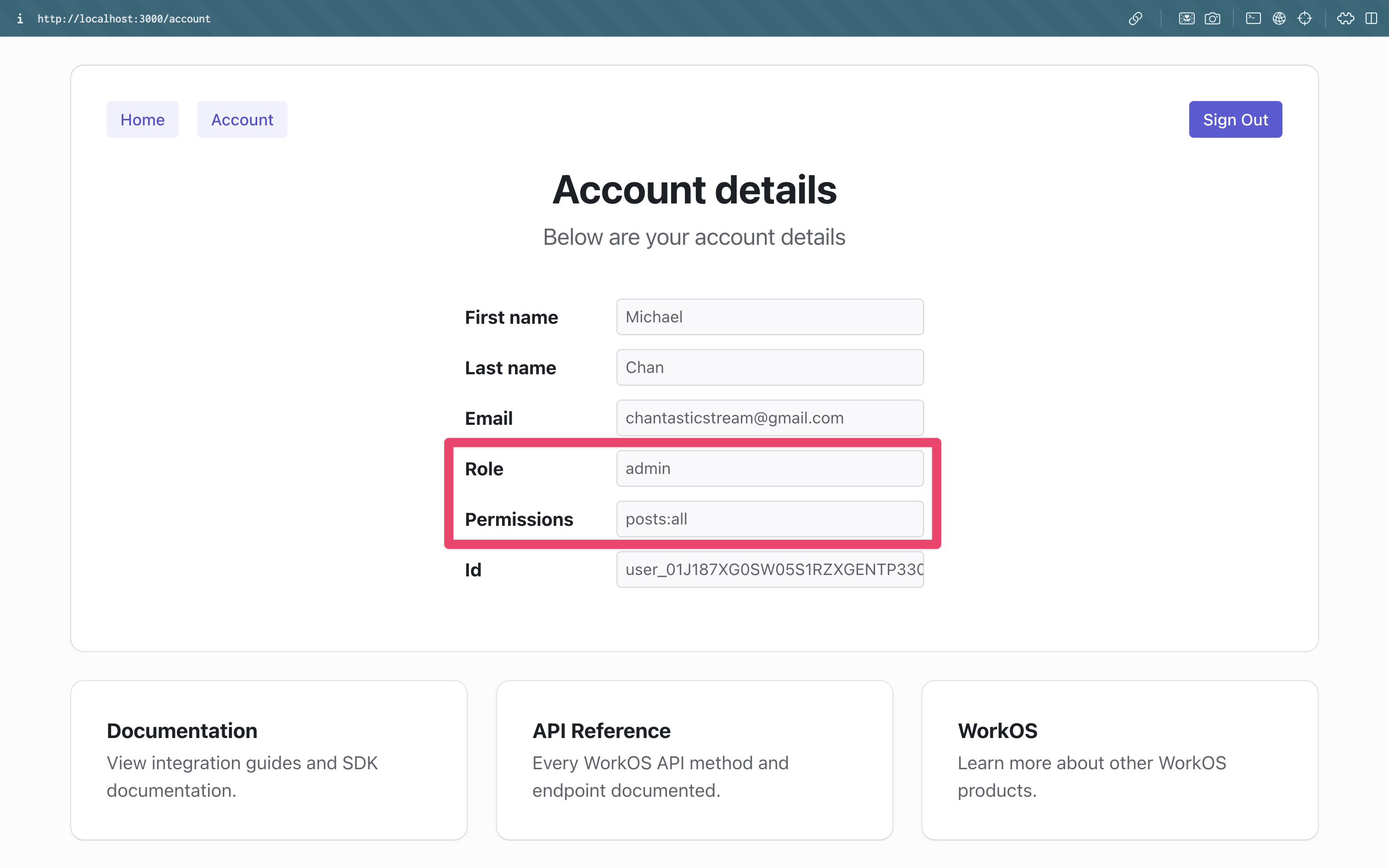
A couple things to note
- You need to upgrade to the latest version of the WorkOS SDK for the update User type.
- Our doc on Roles and Permissions includes a number of best practices for your projects. Including suggestions for role assignment for SCIM integrations.